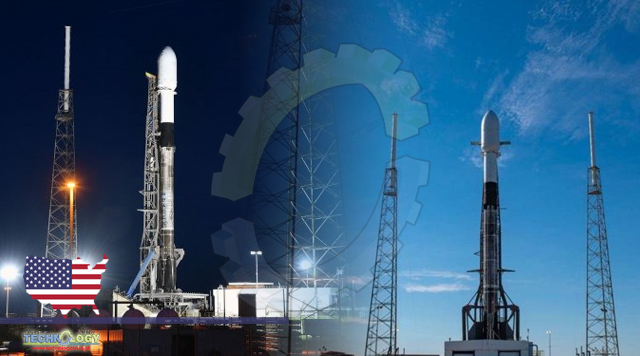James Russell, a professor at Hampton University and principal investigator with NASA’s AIM atmospheric research satellite, says he’s worried about the chances of a collision between his spacecraft and one of the scores launched Saturday aboard the Falcon 9 rocket.

By WILLIAM HARWOOD
SpaceX Falcon 9 Rocket Poised To Launch A Record 143 Satellites : Three days after launching another batch of 60 Starlink internet satellites, SpaceX intends to launch a record-setting flight to put 143 small satellites into polar orbit Saturday.
Liftoff from pad 40 at the Cape Canaveral Air Force Station, using a first stage making its fifth flight, was targeted for 9:40 a.m. EST, setting up a rare southeasterly climb over the Caribbean to a 326-mile-high orbit around Earth’s poles.
The 143 satellites on board will be the most ever launched by a single rocket, eclipsing the previous 104-satellite mark set by India’s Polar Satellite Launch Vehicle in February 2017.
The “Transporter 1” mission is SpaceX’s first dedicated “rideshare” flight in a program intended to provide low-cost access to space for small satellites that otherwise might have problems hitching rides aboard rockets carrying larger, higher-priority satellites.
SpaceX charges a relatively low $1 million to launch a 440-pound satellite and $5,000 for every 2.2 pounds above that base level. The company says Transporter missions will be carried out every four months or so as required.
The first Transporter flight Saturday features a smorgasbord of CubeSats, nanosats and other small spacecraft provided by multiple companies and institutions.
The manifest included 10 of SpaceX’s Starlink internet relay stations, pushing the total launched to date to 1,025, 48 Planet-built SuperDove Earth-imaging satellites and Spaceflight Inc.’s Sherpa-FX1 orbital transfer vehicle.
Also on board: 17 small Kepler communications satellites and 30 U.S. and European smallsats packaged for flight by German-based Exolaunch. Memorial spaceflight company Celestis is sending cremains aloft in small containers, including ashes from the late CBS News Radio correspondent Dave Barrett, a lifelong space enthusiast.
Rideshare flights are a recent commercial innovation giving companies and institutions relatively quick, affordable access to space they might not otherwise be able to secure.
But critics say the rapidly increasing numbers of satellites translate into an increased threat of potentially catastrophic collisions and resulting space debris that could pose a threat to other spacecraft. So called mega-constellations in low-Earth orbit also threaten astronomical observations by the world’s largest telescopes.
In its recently released 2020 annual report, NASA’s Aerospace Safety Advisory Panel cited space debris as “a major safety issue” and the “dominant contributor to calculations of loss-of crew predictions” for SpaceX Crew Dragon and Boeing Starliner astronaut ferry ships and Lockheed Martin’s Orion deep space capsule.
Space debris also contributes to two of the top three risks faced by the International Space Station.
“The hazard persists and continues to grow exponentially,” the report states. “Space is becoming more congested. For example, CubeSats and other small satellites are being launched with increasing frequency, and several companies are now deploying mega-constellations with hundreds, or even thousands, of satellites.”
U.S. Space Force provides satellite tracking, but it is growing increasingly difficult and there is no regulatory framework governing active risk management and collision avoidance.
Given all satellites in low-Earth orbit are moving at nearly 5 miles per second, collisions are likely catastrophic events, generating clouds of equally fast-moving debris that can trigger subsequent collisions with other satellites.
“As the potential for orbital collisions rises with increasing congestion, it is important to recognize that risks to astronauts, critical national security capabilities and global space commerce are also on the rise, to the extent that the use of some orbital regimes may become impractical due to debris density,” the ASAP report states.
NASA, the Department of Defense, the National Oceanic and Atmospheric Administration, the Federal Communications Commission and the Federal Aviation Administration all play roles in U.S. space launch, but their responsibilities do not extend to space traffic management.
“Given the recent increase in non-traditional commercial space operations, including satellite servicing, space tourism and the deployment of large numbers of satellites to provide worldwide internet access, updates to the existing roles and responsibilities may be appropriate,” the ASAP said.
“As things stand today, there are no clear lines of authority for directing coherence among the many entities that operate in space.”
James Russell, a professor at Hampton University and principal investigator with NASA’s AIM atmospheric research satellite, says he’s worried about the chances of a collision between his spacecraft and one of the scores launched Saturday aboard the Falcon 9 rocket. Many, he says, will all be in a similar orbit at roughly the same altitude.
“I think it highlights the urgent need to establish some kind of regulation and control over what the private sector can and cannot do,” he said in a statement. “It further emphasizes the requirement for closer cooperation between (the public and private) sectors in order for both to reach their own goals.”
Brian Weeden, director of program planning for Secure World Foundation, said the U.S. government “is well aware of the problem. It’s that they haven’t yet figured out how to do this. And not all of them are on the same page.”
“We’re still sort of in this gray zone of debating what the best answer is going to be,” he said. “They were leaning towards having industry develop sort of the standards that the government would then implement. That’s what the Trump administration was leaning towards.
“It’s another problem we’ll throw on the to-do list for the Biden administration.”
Originally published at Cbs news